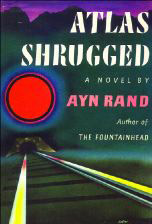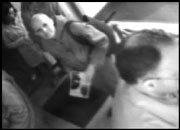In 1925, the year she would write Mrs. Dalloway, Virginia Woolf was in two places at once: at the threshold of greatness and the brink of madness. In The Hours, based on the 1998 novel by Michael Cunningham, Nicole Kidman is Virginia Woolf, the English novelist of incomparable force and effulgence already physically half-deteriorated. Taunted by voices and tormented by headaches of unbearable severity, Woolf managed to achieve greatness—and, in The Hours, for the first time in her career, Nicole Kidman does, too, beginning when she comes down the stairs and says to Mr. Woolf, in a rare moment of self-assertion, “Leonard, I believe I may have a first sentence.”
In the movie, we see Virginia Woolf work on Mrs. Dalloway, and we see her kill herself—and the way things are presented, you’d think one followed the other. In fact, 16 years separated the publication of Mrs. Dalloway and the drowning of Mrs. Woolf. (The author did all her best work in those 16 years, including The Waves and To the Lighthouse.) Cunningham’s novel is the story of Virginia Woolf and two other women—an unhappy 1950s housewife (played in the movie by Julianne Moore) who would rather read Mrs. Dalloway than take care of her family, and a lesbian New Yorker (played by Meryl Streep) whose life resembles the fictional Mrs. Dalloway’s. Suicide is a major theme in Cunningham’s novel—or at least a lot of his characters think about it or have to clean up after others who commit it—which is not surprising, because suicide is spectacular, contrived, and inherently dramatic, and spectacular contrivances are all that Cunningham cares to create.
No one will admit it now, but The Hours is a terrible book, abundantly underachieved and certainly unworthy of the Pulitzer Prize (which it won in 1999). Trite, soggy, sentimental, too clever, horridly written, and essentially meaningless, its flaws are further amplified when you compare it to the novel that inspired it. Woolf is a writer of profound intellect and agility, whereas Cunningham writes puddle-deep sentences like, “Those who are now old were once young.” In an outdoor scene, Woolf chooses to describe something like the striking imposition of a clock tower (“First a warning, musical; then the hour, irrevocable”), whereas Cunningham chooses to describe, well, puddles (“Patches of sky shine in puddles left over from last night’s rain”). Had he opted to work instead for the private sector, Cunningham could have enjoyed a highly successful career in the catalog division at L.L. Bean.
“At first sight, the art of the cinema seems simple, even stupid,” Virginia Woolf wrote in “Reality and the Movies,” an essay that appeared in The New Republic in 1926. With boldness and aplomb (Woolf was also a ferocious critic), she attacked the art of movies for plundering, “with immense rapacity,” the art of literature. What Woolf could not have predicted is that in rare instances, when the novel is—like The Hours—cloying, slight, fatuous, superficial, and paltry, the jump to the screen can make the work better. Such a strong movie springing forth from such a drecky book has happened only once before in history (to our memory), with The Bridges of Madison County, which, by no coincidence, also starred Meryl Streep. Streep can accomplish, in a gesture, what Cunningham couldn’t do in 200 pages. “Sometimes at the cinema,” Woolf wrote, describing this kind of inexplicable filmic phenomena, “in the midst of its immense dexterity and enormous technical proficiency, the curtain parts and we behold, far off, some unknown and unexpected beauty.”







